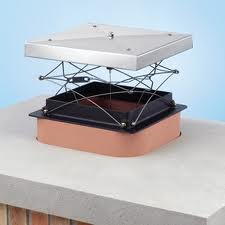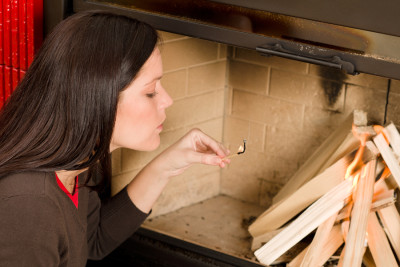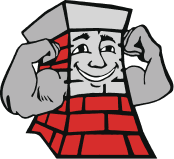Everything to Know about Chimney Dampers
 The primary purpose of a chimney damper is to close off the flow of air in the chimney when the fireplace or wood stove is not in use. When a fire is lit, a homeowner opens the damper to allow proper airflow to feed the fire and keep smoke from filling up the living space.
The primary purpose of a chimney damper is to close off the flow of air in the chimney when the fireplace or wood stove is not in use. When a fire is lit, a homeowner opens the damper to allow proper airflow to feed the fire and keep smoke from filling up the living space.
Typical chimney dampers create an inefficient metal-to-metal seal. Even a new damper allows air to get through. After a fireplace has been used repeatedly and after a damper has been exposed to the damaging effects of heat & moisture, the damper can become warped allowing more air from the home to escape up the chimney when the fireplace is not in use.
According to one in-depth study, about 80% of chimney dampers are left open inadvertently. Leaving the damper open is essentially the same as leaving a window wide open. The heated air in the home is steadily pulled up and out of the chimney. According to another study, the overall cost of energy consumption for heating and cooling with an open damper is increased by 30%.
Another problem that results from an open damper or a damper that won’t fully close is that unpleasant smells from the chimney can leak into the home. Especially if moisture gets into the chimney system, chimney odors can be very strong.
One misunderstanding that some people have about dampers is that opening them only partially is helpful as far as retaining more of the heat from a fire. This is a wrong assumption. What actually happens if the damper is partially closed is that the fire itself is unable to get a proper draft, and a lot of smoke will typically spill into the room. The result of a partially closed flue can also be that toxic fumes enter the home, and any blockage of the chimney can have the same result.
Test Your Damper
 There are a couple of tests you can use to determine how good a job your chimney damper does of creating an effective seal. First, close the damper, light a match, and then blow out the match. Next, hold the match next to the damper opening. In the alternative, you can use burning incense and watch where the smoke trail from the match or incense goes. If the smoke travels up the chimney, there is a significant amount of heat loss going up your chimney. If the smoke blows into the room, it’s a sign that drafts are coming in from outside.
There are a couple of tests you can use to determine how good a job your chimney damper does of creating an effective seal. First, close the damper, light a match, and then blow out the match. Next, hold the match next to the damper opening. In the alternative, you can use burning incense and watch where the smoke trail from the match or incense goes. If the smoke travels up the chimney, there is a significant amount of heat loss going up your chimney. If the smoke blows into the room, it’s a sign that drafts are coming in from outside.
Another way to test your damper is to place a dollar bill between the damper plates as you close the damper. After closing it, if the bill easily slides out, your damper is leaky. Repeat the test all the way across the damper because it may leak in one spot but not in others.
Solutions
One of the most effective solutions is to install a top-mounting chimney damper. These products have been described as ground-breaking products. Properly installed, they effectively keep out 100% of the outdoor air temperatures from entering your home through the chimney.
It is simple to open and close a top-mounted damper because a stainless steel cable runs down the chimney to a handle which can easily be set in the position that opens or closes it.
Contact our chimney professionals if your damper is defective, and we can install a new one. We can also answer all your questions about installing a top-mounting damper.
Northeastern Chimney, Inc
37 Cody Street, West Hartford, CT 06110
Phone: 860-233-5770


